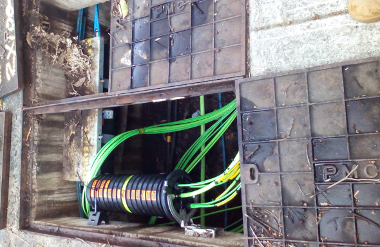 So your NBN is more expensive than thought?
So your NBN is more expensive than thought?
Those of us who've been involved with building broadband networks to deliver services across Australia for more than a year or two are well aware that any national broadband network will be expensive, and one that covers a country of about 7.5 million square kilometres is going to be very, Very Expensive indeed. However, given the efficiencies economies gain from having widespread, reliable, and high performance digital infrastructure,
more and more countries are adopting policies that promote the installation of ubiquitous, fast broadband.
Looking back, when Optus built its HFC network it was not profitable for quite some time. There are several reasons for this, and they simply boil down to costs being higher than they expected, and take up being significantly lower than expected. As to take up, in other countries where free to air television was of poorer quality, pay television has been a much more attractive option. Also, in those locations HFC is frequently the only option for households to connect to broadband and television services. In Australia's case all the potential customers not only had the option for existing Telstra telephony services but - soon after Optus arrived - many had the choice of brand new Telstra cable television as well. Lousy financial deals for content added to the cost and lack of attraction. Ultimately cable broadband arrived and not long after that the owners of Optus managed to write down the capital cost of the network which meant their operating business case improved. What is not so well known (and came as a big surprise when NBN Co acquired it) is that Optus hadn't been spending heavily on the HFC network's upkeep.
The big issue for NBN, however, is making a return on the investment such that it doesn't have to borrow over its allowed level. So far, its calculations have been that it would have over 70% take up (I have always used about 40% due to the availability of infrastructure competition) at a price that is higher than most people have been paying. While both figures are reasonable in context, Australian consumers have been accustomed to broadband prices dropping whilst still receiving improved data rates and increased download quotas. Couple that with our recent addictions to Netflix, iView and other video streaming services, our expectations have skyrocketed and performance hasn't kept pace so a sceptical consumer base has led to take up being at lower price points. Adding these factors together leads Standard and Poors to conclude it is inevitable that more government money will have to go into the project, or the financials will have to change in some other significant way.
Narelle Clark 17 September 2018
